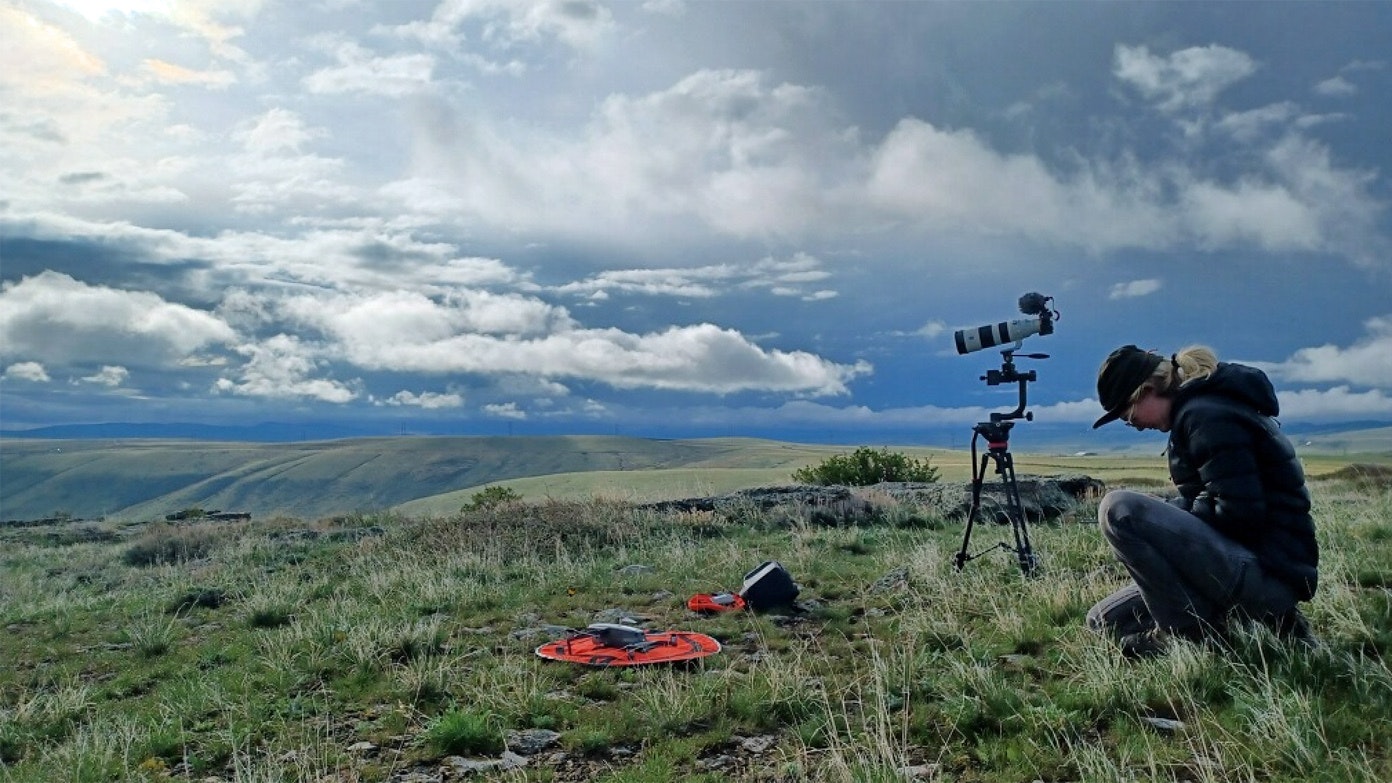Make it about the ranchers who actually do the work and live the stories – that’s the approach the co-producers of a new three-part wildlife conservation film series decided to take.
“There hasn’t been a lot of creative content about the lives that these ranchers live and the sacrifices they make so the big game species can persist and thrive,” co-producer Emily Reed told Cowboy State Daily about the “My Wild Land” film series.
Reed and co-producer Patrick Rodgers are researchers with the Wyoming Migration Initiative (WMI), which operates through the College of Agriculture, Life Sciences and Natural Resources at the University of Wyoming.
Each of the films features a family-owned and operated Wyoming ranch. Those include the Terry Creek Ranch near Laramie, the Hellyer family ranch outside of Lander and the E.O. Bischoff Ranch near Lovell.
“It (the film series) shows what we do in our day-to-day operation, what we do to make the ranch go,” Bischoff ranch manager Tyrell Bischoff told Cowboy State Daily. “It does highlight what we’re doing to make things better for the wildlife.”
The “My Wild Land” films were about a year in the making, including roughly four-months of on-the-ground production work, Rodgers said.
That meant getting out and filming the ranchers in their everyday routines, and connecting that with how their methods help benefit wildlife, he said.
“We wanted to highlight a diversity of ranch management styles and offer views from different parts of the state,” he said.
Bischoff said being on camera as he went about his days wasn’t natural for him, but he appreciates what the films could do for ranching and wildlife conservation.
“It was a little embarrassing, but it’s kind of cool. You really don’t want to be in the spotlight, or at least I don’t anyway,” he said.
“Anything that’s going to benefit wildlife is going to benefit us as ranchers,” he added. “We follow all the same water sources and use all the same rangelands as the wildlife.”
It was important to make the movies about the people directly involved, rather than about scientific facts and data, Rodgers said. Good stories are what draw the audience in and demonstrate why the topic – in this case, wildlife and habitat preservation – is meaningful and important.
In their own way, ranchers are researchers, because they’re constantly observing what’s going on with the land and the animals that depend upon it, Reed said. Hunters, research scientists and others take only temporary forays into the lands that ranchers see every day.
“They have a much more intimate and deep connection with the rhythms of the landscape,” she said.
Ultimately, the films are about two things at the heart of Wyoming’s culture, she said – protecting wildlife and preserving the ranching way of life.
“It was just a treat for us to get to know these under-represented people and what they do for the wildlife and the landscape,” Reed said.
Screenings of the films will be free and open to the public, and free raffles and informal discussions will follow, Rodgers said.
“It will be a time for people to just visit, ask some questions and share stories,” he said.
Along with WMI, the films were supported through the Muley Fanatic Foundation and the Rocky Mountain Elk Foundation, with additional support from Maven Outdoor Equipment Company.
Screenings are scheduled for:
· September 1 in Jackson at the Teton County Library. Doors open at 5:30 p.m. and the films start at 6 p.m. Hosted by WMI, the Jackson Hole Wildlife Foundation and the Greater Yellowstone Coalition.
· September 22 in Laramie at the Gryphon Theatre. Doors open at 5:30 p.m. and the films start at 6 p.m. Hosted by WMI and the Wyoming Stock Growers Land Trust.
· September 29 in Lander at the Lander Community and Convention Center. Doors open at 6 p.m. and the films start at 6:30 p.m. Hosted by WMI and the Wyoming Wildlife Federation.





